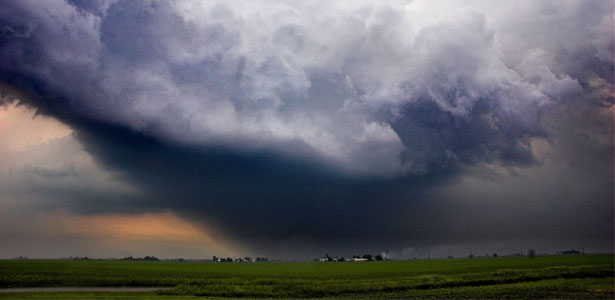
If a tornado touches down and no one sees it, does it exist? Not according to researchers who study the National Severe Weather Database, which catalogs observed occurrences. Instead, they argue that the information, collected since 1950, reflects a population bias—the tendency for densely inhabited areas to make more reports than rural ones. Most estimates of tornado risk across the United States, therefore, are probably low.
“Our research can help better quantify the actual risk of a tornado,” says James Elsner, a geography professor at Florida State University. “In order to do this using the historical record, it is necessary to correct for nonweather factors” such as storm chasers, better detection technology, and general public awareness. In a 2013 issue of the journal Weather, Climate, and Society, he and graduate student Laura Michaels published a method that adjusts the data to account for fewer tornado reports in the past. Their computer model increases the number of accounts in rural areas by a factor linked to the number in the closest city, as well as by the distance to that city.
Someday soon they hope to develop risk models that can estimate the likelihood that an individual home will be hit by a tornado.

